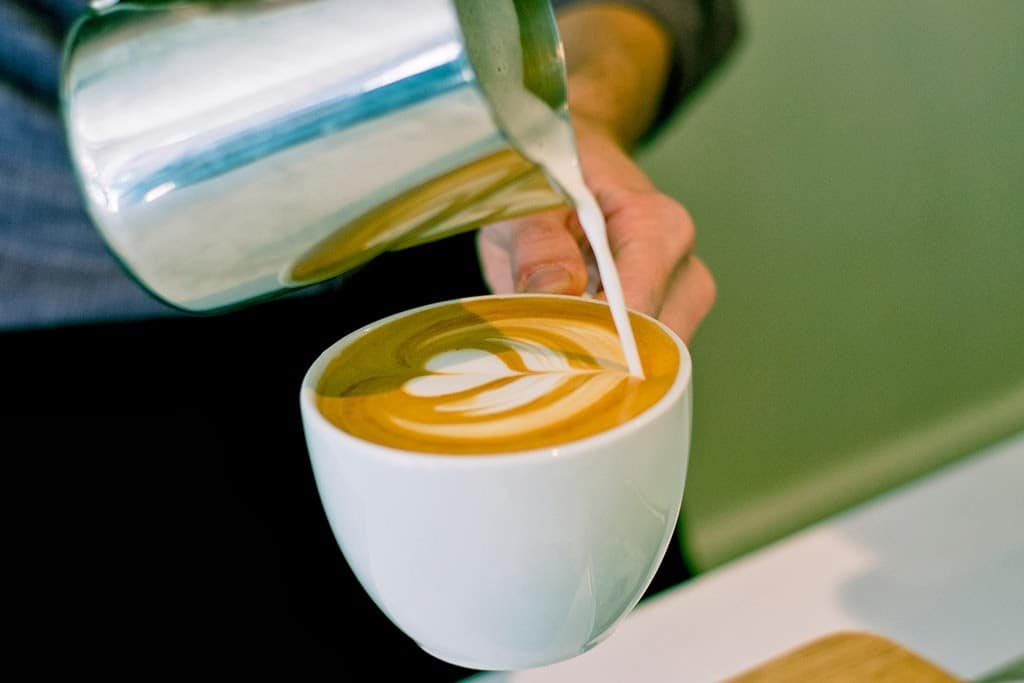Order a flat white in the United States and you’ll most likely get a blank look from your barista. Explain it to them and they can be forgiven for mistaking it for a cafe latte. And rightly so, as the key difference between the two is a few millimetres of foam.
A flat white is traditionally made in a ceramic cup with one shot of espresso, steamed milk and a very small layer of micro-foam on top from a “latte” machine. Some baristas argue that a flat white should have no micro-foam at all. But the general consensus favours 2-5ml of foam mainly to prevent spills.
But how did this cafe-latte-like drink come about? Well, first you have to understand where it was made to know why it was made.
Most people are lead to believe that the flat white originated down under in Australia. But in fact its origins, like Russell Crowe, can be traced back to Australia’s neighbour, New Zealand.
In Australia and New Zealand, lattes are traditionally served in a glass tumbler rather than in a ceramic cup. However, some consumers grew to dislike the extra foam of the latte and the grasp of tumbler glass. And so the flat white was born.
The flat white has made some appearances in countries above the northern hemisphere of this little world. However mainly in speciality cafes or in venues owned by expatriate Aussies and Kiwis.
If you’re thinking of trying one out for yourself its very easy to make. Just take off the foam from your cafe latte or preferably reduce the amount of micro-foam made when steaming your milk.
Have you tried a flat white before or do you think it’s just a cafe latte in disguise? Tell us below.



I find that a flat white also differs, at least in my region in the U.S. (Northeastern – New York) by size. When a customer orders a FW, for me this means I’ll make an 8oz. beverage (rather than 12oz. for a small latte or, in the case of the big chains, a liter or more of a latte. 😛 Hehehe…). I suppose the reasoning behind this is that we’re looking for a drink that resembles an “expanded espresso” rather than a coffee-flavored milk. We want to highlight the flavors of espresso, keeping sweetness, but extending the drinking experience through an effect of volumizing. It means, as well, cutting the shot short by a fraction so as to impart a sweeter espresso taste once the milk is added…not allowing the blonding to impart too much bitterness. Finally, as you pointed out, less foam than a latte. I like what you said: just enough “mainly to prevent spills.” (I also think it’s nice to have the textural tactile experience of dipping through a layer of micro-foam, no matter the beverage!) I’m interested in others’ views, as I’ve been a longtime amateur aficionado but have recently become a professional barista. This seems to be what is most satisfying for customers, however, in my execution of a FW. Would particularly love to hear the opinion of Aussies or Kiwis to see if my version of a FW is an American influence or if it’s more authentic to yours.
At starbucks, we are instructed to make our flat whites with double ristretto shots, whole milk, and create a white dot on top. We make them in 12oz, 16oz, and 20oz.
Thank you for your valuable article.☺ I have a question about a flat white. There is no description of an Iced flat white in this article. I wonder how to make an Iced flat white. If simply putting ice in it is a Iced flat white, what is the difference between an iced flat white and an iced latte?